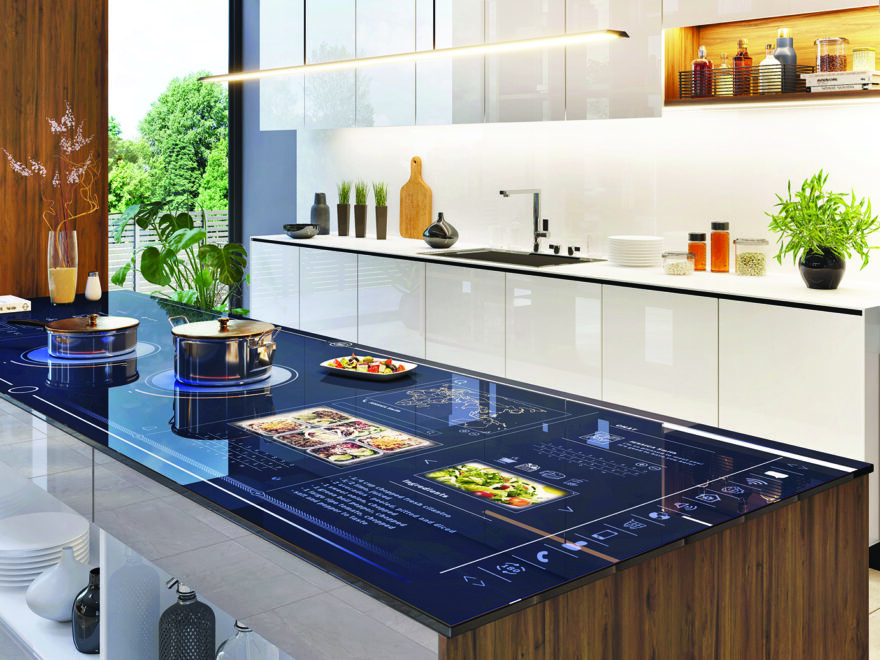Home automation is a new and exciting opportunity for many of us – but when technology is new and people are still learning, there’s often a lot of misinformation, misconceptions and (often) some very tall stories.
We’ve debunked some common smart home myths so that you can better understand home automation and make the right choice for you or your customer.
Myth 1: My home is too old, home automation is only for newer homes
There’s no home too old. Our smart home systems can be retrofitted to the home you live in, regardless of the age of the building – all you need is electricity.
If you’re unsure, chat to your electrician. They can explain which solutions would work seamlessly with your space and your lifestyle.
Once you’ve identified the home automation solution that’s right for you, they can get started on installing it. After that, you’ll be a home automation convert and tell all your friends.
Myth 2: It’s way too technical for me to understand
When you hear “home automation” or “smart home”, you might imagine the TV turning on by itself and you not being able to turn it off. Or you might picture complex panels and circuits, with wires everywhere, and lots of buttons with words and symbols you don’t understand.
But that’s not the case at all!
The purpose of home automation is to make your life easier, not harder and more complicated. That’s why we’ve designed the PDL smart home systems so they’re easy to navigate and integrate seamlessly into everyday living.
Often, it’s as simple as setting up the schedules using our Wiser by SE app on your smartphone or tablet. Once it’s all set up, the programmed schedules work every day by themselves and do all the thinking for you.
So, essentially, if you can use an app, you can use home automation.
Myth 3: Home automation is expensive and only for bigger homes
Size doesn’t matter. You can automate homes of any size – from a studio apartment to a townhouse, duplex or 8-bedroom mansion. As we mentioned before, all your home needs is power. You can also automate as little as one switch at a time, so the cost and scale is completely up to you.
Your focus shouldn’t be on the size of your home, but on your lifestyle and which appliances and electricals you’d like to control, such as:
- switching the heating and cooling on in your home before you arrive home.
- turning off your hair straightener.
- programming your lights to turn on at a specific time each evening when you arrive home.
- preheating your smart oven.
- Automatically turning on/off your Christmas lights each holiday season.
There are lots of cost-effective ways to automate your home in a way that suits you. Our Wiser Iconic Connected switches and sockets are affordable and customisable to your needs and budget.
Myth 4: I’d have to automate every light in my home
Home automation is not one-size-fits-all: it’s about finding an automated solution that will work for you, your home and your lifestyle.
You can pick and choose what you’d like to automate. Some people choose to start small – just automating a single light switch or powerpoint – to see what works and they add on from there.
Suggested ways to try home automation:
- Automate a single light switch or powerpoint – we’d recommend a switch you use daily or that could have a big impact so you can really get a sense of how automation can benefit you. You can do this with our Wiser Iconic connected switches and sockets, controlled via the free Wiser by SE app from your device.
- A single room – such as the kitchen which you use daily.
- Group of rooms – for example, all your bathrooms or all the bedrooms.
- Specific switches or areas throughout your home that would help day-to-day – such as your kitchen and laundry appliance switches.
Remember it’s all scalable – you can use as much or as little technology as you like.
Myth 5: Home automation uses way more energy
Incorrect! Contrary to popular belief, home automated electrical solutions are designed to consume less power and save energy, as well as allowing you to monitor overall power usage.
For example: you might have air-conditioning on for 6-7 hours per day by default, as you like the house always cooled. But you could reduce the power usage by setting a timer that follows an intermittent running schedule (on for 2 hours, off for half an hour, etc). You can still keep the house cool, but by automating it, you’re not forced to keep your air conditioning on the entire time, draining energy.
Same goes for other appliances that you might automate – by using automation, setting timers and creating schedules for power to be on and off, you’ll find you’re actually conserving energy.


